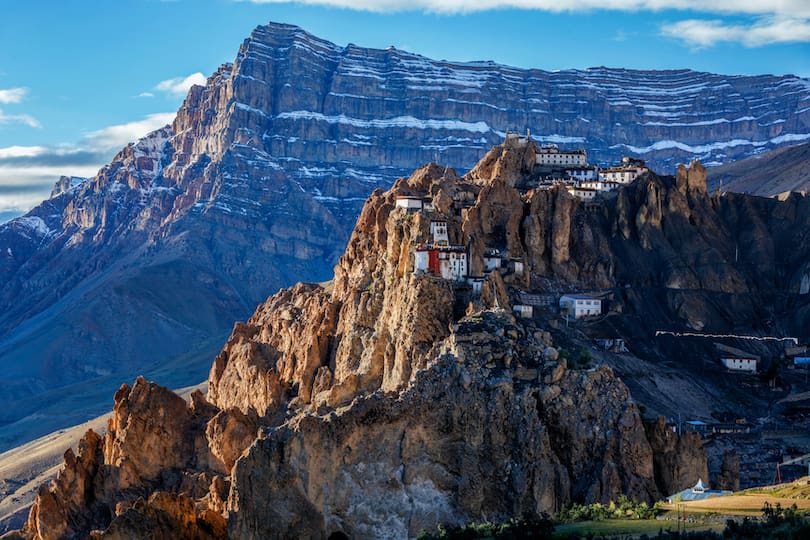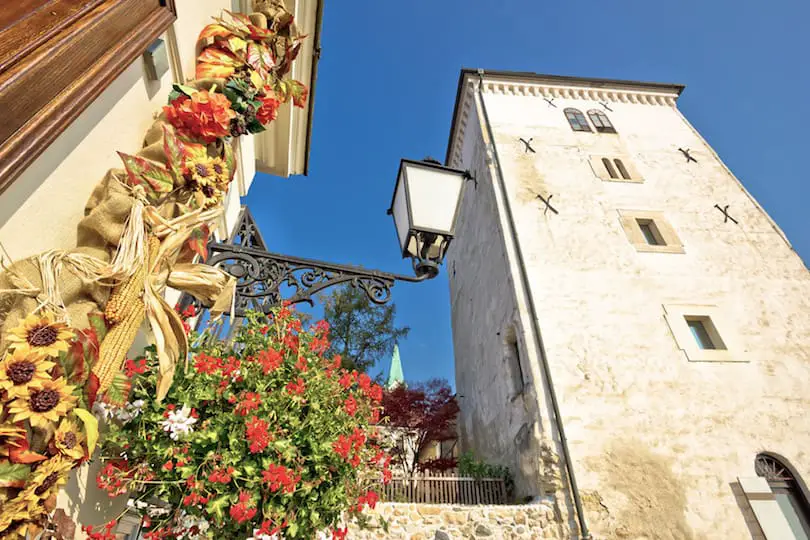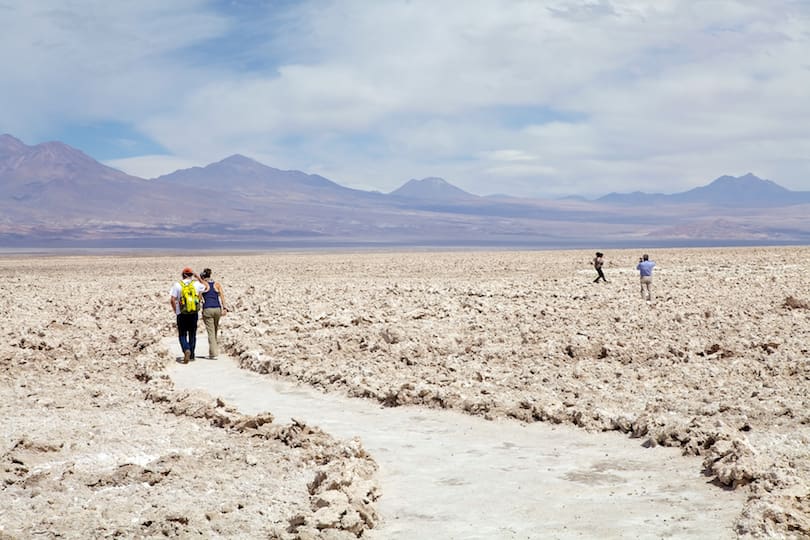As the world becomes increasingly modern and connected, it’s easy to forget that there are still places of seclusion and serenity where one can escape the noise and find inner peace. Monasteries, in particular, offer a unique opportunity for travelers seeking a deeper connection to their spiritual selves. Here are the 17 most remote monasteries on Earth, each offering a glimpse into a different cultural and religious tradition.
Table of Contents
- Introduction
- The Spiritual Significance of Monasteries
- The Most Remote Monasteries in Asia
- Tiger’s Nest Monastery, Bhutan
- Phugtal Monastery, India
- Mount Koya Monastery, Japan
- Taktsang Palphug Monastery, Tibet
- Yumbulagang Monastery, Tibet
- The Most Remote Monasteries in Europe
- Athos Monastery, Greece
- Skellig Michael Monastery, Ireland
- Meteora Monastery, Greece
- Mont Saint Michel Monastery, France
- The Most Remote Monasteries in Africa
- Debre Damo Monastery, Ethiopia
- Mount Sinai Monastery, Egypt
- The Most Remote Monasteries in the Americas
- La Popa Monastery, Colombia
- San Esteban Monastery, Peru
- Taos Pueblo Monastery, New Mexico
- Monastery of Christ in the Desert, New Mexico
- Conclusion
- FAQs
Introduction : In a world that’s becoming increasingly connected, it’s easy to forget that there are still places of seclusion and serenity where one can escape the noise and find inner peace. Monasteries, in particular, offer a unique opportunity for travelers seeking a deeper connection to their spiritual selves. Whether nestled in the mountains, tucked away in a forest, or perched on a cliff overlooking the sea, these sanctuaries provide a space for individuals to reflect on their lives, connect with nature, and explore the depths of their faith. In this article, we’ll explore the 17 most remote monasteries on Earth, each offering a glimpse into a different cultural and religious tradition.
The Spiritual Significance of Monasteries
For centuries, monasteries have been places of spiritual reflection and solitude, serving as havens for those seeking to escape the noise and chaos of the outside world. The act of retreating from society and entering a monastery is seen as a way of purifying oneself, gaining clarity, and drawing closer to God or the divine. It’s a time to disconnect from the material world and focus on the spiritual realm.
Monks and nuns who reside in these monasteries often spend their days in contemplation, prayer, and meditation, seeking to deepen their connection with the divine. Visitors who journey to these remote locations can participate in these practices, even if only for a short time, gaining insight and inspiration for their own spiritual journeys.
The Most Remote Monasteries in Asia
- Tiger’s Nest Monastery, Bhutan : Also known as Paro Taktsang, this stunning monastery is perched on a cliffside nearly 3,000 feet above the Paro Valley in Bhutan. Legend has it that Guru Rinpoche, a famous Buddhist master, flew to this spot on the back of a tiger and meditated in a cave here for three months. Today, the monastery remains an important pilgrimage site for Buddhists around the world.
- Phugtal Monastery, India : Located in a remote corner of northern India, the Phugtal Monastery is carved into the side of a cliff overlooking the Lungnak River. The monastery’s isolated location, surrounded by barren mountains and desert, adds to its mystical appeal. Visitors must trek for days to reach this ancient site, making the journey as much a spiritual quest as a physical one.
- Mount Koya Monastery, Japan : Nestled in the mountains of Wakayama prefecture, Mount Koya is a sacred site in Japanese Buddhism. The area is home to over 100 monasteries, many of which offer lodging for visitors seeking a traditional Japanese spiritual experience. The secluded location of the mountain and the monasteries themselves provide a peaceful and serene atmosphere for those seeking a break from the hustle and bustle of modern life.
- Taktsang Palphug Monastery, Tibet : Also known as the “Tiger’s Nest” Monastery, this sacred site in Tibet is perched on a cliff nearly 10,000 feet above sea level. Legend has it that Guru Rinpoche flew to this spot on the back of a tiger and meditated in a cave here for three months. Today, the monastery remains an important pilgrimage site for Tibetan Buddhists and visitors from around the world.
- Yumbulagang Monastery, Tibet : Located in the Yarlung Valley of Tibet, the Yumbulagang Monastery is believed to be the first building in Tibet and has a history that stretches back over 2,000 years. Perched on a hilltop, the monastery offers stunning views of the surrounding valley and is a popular destination for those seeking to explore the rich cultural and religious heritage of Tibet. Visitors can also take part in traditional Tibetan ceremonies and witness the daily life of the monks who call this remote monastery home.
The Most Remote Monasteries in Europe
- Athos Monastery, Greece : Located on a remote peninsula in northern Greece, the Athos Monastery is one of the oldest and most significant monastic communities in the Orthodox Christian world. With no paved roads, electricity, or modern amenities, this secluded community of monks lives a simple and devout life, adhering to centuries-old traditions and practices.
- Skellig Michael Monastery, Ireland : Situated on a rocky island off the western coast of Ireland, the Skellig Michael Monastery dates back to the 6th century and was home to a community of Christian monks until the 12th century. Today, the monastery is a UNESCO World Heritage Site and attracts visitors from around the world who are drawn to its rugged beauty and historical significance.
- Meteora Monastery, Greece : Built atop towering rock formations in central Greece, the Meteora Monastery is a testament to the ingenuity and perseverance of the monks who constructed it. The monastery complex, which consists of six active monasteries, was built in the 14th and 15th centuries and offers breathtaking views of the surrounding landscape.
- Mont Saint Michel Monastery, France : Perched on a small island off the coast of Normandy, France, the Mont Saint Michel Monastery is a marvel of medieval architecture and engineering. Founded in the 8th century, the monastery has been a site of pilgrimage for centuries and continues to draw visitors from around the world with its stunning beauty and rich history.
The Most Remote Monasteries in Africa
- Debre Damo Monastery, Ethiopia : Located atop a steep cliff in northern Ethiopia, the Debre Damo Monastery is accessible only by climbing a rope made of animal hide. Founded in the 6th century, the monastery is home to some of the oldest Christian manuscripts in the world and offers visitors a glimpse into the rich religious and cultural heritage of Ethiopia.
- Mount Sinai Monastery, Egypt : Perched at the foot of Mount Sinai, the Mount Sinai Monastery is one of the oldest Christian monasteries in the world. Founded in the 4th century, the monastery has played an important role in the history of Christianity and is a popular destination for pilgrims and travelers seeking spiritual renewal and reflection.
The Most Remote Monasteries in the Americas
- La Popa Monastery, Colombia : Located atop a hill overlooking the city of Cartagena, the La Popa Monastery is a hidden gem in the heart of Colombia. Founded in the 17th century, the monastery is home to a collection of colonial-era artifacts and artwork, as well as a vibrant community of monks who continue to practice their faith in seclusion and solitude.
- San Esteban Monastery, Peru : Built in the 16th century on the slopes of the Andes Mountains, the San Esteban Monastery is a testament to the perseverance and dedication of the Spanish monks who founded it. Today, the monastery is a popular destination for travelers seeking to explore the rich cultural heritage of Peru and the Andean region.
- Taos Pueblo Monastery, New Mexico : Located in the heart of the Taos Pueblo Indian Reservation, the Taos Pueblo Monastery is a unique and sacred space that has been a center of spiritual and cultural life for the Taos Pueblo people for centuries. Visitors can witness traditional dances and ceremonies, explore the ancient architecture and artwork, and learn about the rich history and traditions of the Taos Pueblo people.
- Monastery of Christ in the Desert, New : Situated in a remote area of northern New Mexico, the Monastery of Christ in the Desert is a Benedictine monastery that offers visitors a peaceful retreat from the modern world. Surrounded by towering cliffs and rugged desert landscapes, the monastery features stunning adobe architecture and offers opportunities for quiet contemplation and spiritual reflection. Visitors can attend Mass or participate in the monastery’s daily prayer services, and can also explore the nearby hiking trails and scenic vistas.
Conclusion:
Monasteries have been an integral part of human history, culture, and spirituality for centuries. From ancient times to the present day, they have provided a sanctuary for meditation, reflection, and connection to the divine. The monasteries listed above are just a few examples of the many beautiful and unique monasteries found throughout the world.
Travel Tips & Tourist Attractions:
- When visiting a monastery, it’s important to dress modestly and respectfully.
- Some monasteries may have specific rules or customs that visitors are expected to follow, so it’s always a good idea to research the specific monastery you plan to visit before you go.
- Many monasteries offer guided tours and educational programs that can enhance your visit and help you learn more about the history and culture of the monastery.
- Some monasteries also offer accommodations for visitors who wish to stay overnight and immerse themselves in the monastic lifestyle.
FAQs:
Q: Can anyone visit a monastery? A: Most monasteries welcome visitors, but it’s important to research the specific monastery you plan to visit beforehand to make sure they allow visitors and to learn about any specific rules or customs they may have.
Q: Do I need to be religious to visit a monastery? A: No, many people visit monasteries for their historical and cultural significance, as well as for their architectural beauty and peaceful atmosphere.
Q: Are monasteries only found in certain parts of the world? A: No, monasteries can be found all over the world, from Europe to Asia, the Americas, and beyond.
Q: Can I stay overnight in a monastery? A: Many monasteries offer accommodations for visitors who wish to stay overnight and immerse themselves in the monastic lifestyle. However, it’s important to research the specific monastery you plan to visit beforehand to learn about their accommodations and any requirements they may have.















very good submit, i certainly love this web site, carry on it
I don’t unremarkably comment but I gotta tell regards for the post on this perfect one : D.
Adorei este site. Para saber mais detalhes acesse nosso site e descubra mais. Todas as informações contidas são informações relevantes e exclusivas. Tudo que você precisa saber está ta lá.
Este site é realmente incrível. Sempre que acesso eu encontro coisas incríveis Você também pode acessar o nosso site e saber mais detalhes! conteúdo único. Venha saber mais agora! :)
Some really excellent info , Gladiola I observed this.